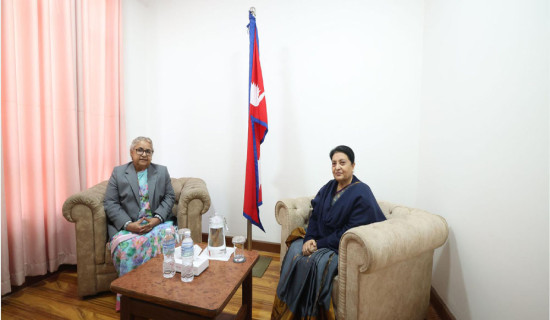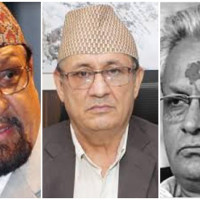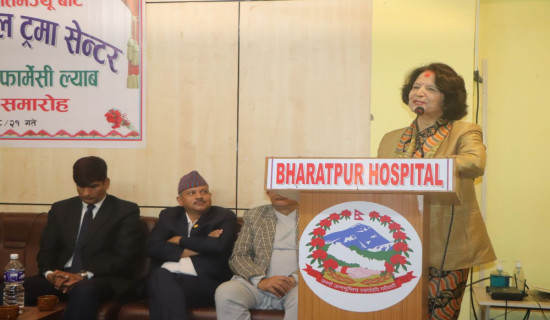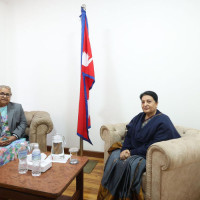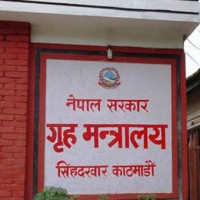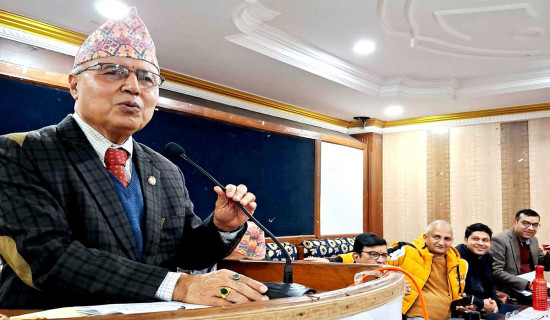- Monday, 8 December 2025
Dialogic Space In Left Movement
The communist movement in Nepal is going through an unprecedented phase of unpopularity. Some intellectuals within the left movement say that the manipulation of online information platforms by regressive forces has made the leftist movement appear unpopular. The social media posts against the left parties and their leaders are a smear campaign deliberately launched to defame this movement. This can be logical but there is more to it than meets the eye. The support base of the communist parties is not intact.
The rise of the country's communist movement presents a distinct case study that does not conform to the trend and trajectories of other countries. In other South Asian countries, communist movements picked up momentum and suffered setbacks after 1990. In Nepal, however, it gained ascendance in the post-1990 era when the world communist movement as such was in a state of decline.
Period of fragmentation
In the 1990s, the communist movement went through a period of fragmentation. The Soviet Union disintegrated, East Germany was reunified with West Germany, Poland fell under the weight of the Solidarity Movement, the communist regime of Nicolae Ceauescu was overthrown in Romania and other smaller East European communist countries succumbed to a series of revolts known as the Third Wave. It was a surprising phenomenon for the communist movement in Nepal to emerge as a national force in such an adverse international situation.
After emerging as a dominant political force in the People's Movement of 1990, the Communist Party of Nepal (UML) enjoyed a period of high tide for three decades. It was in the government several times. It once even commanded a two-thirds majority. The communist movement thrived in Nepal at a time when scholars like Fukuyama wrote The End of History and announced that communism as an ideology and praxis was on the journey to its sunset.
The joint movements of 1990 and 2006 were landmark events that demonstrated the scale of mass support for the communist movement in Nepal. The cumulative impact of these two movements overthrew the monarchy and paved the way for the transition to a federal democratic republican system- a necessary precondition for the transformation of the Nepali society to socialism. Experience shows that the communist parties were good at mobilizing people to wage movements but not smart enough in leading the society to economic prosperity. As a result, in spite of establishing a republican system in the country, the issue of equal access of the people to productive resources remains unaddressed.
Some ideological innovations were made within the communist movement in the decades following 1990. Late Madan Bhandary and Prachanda are credited for these innovations, though their practicality remains to be tested. Late Bhandary, who was the most charismatic leftist leader in the 1990s, propounded a theory of Multiparty People's Democracy. But this theory, instead of contributing new ideas, embraces many core values of liberal capitalist democracy, such as periodic election, government of the majority and opposition of the minority, guarantee of fundamental rights and rule of law although it also proposes some elements of socialist democracy like equal opportunities, social justice, inclusive representation and protection of minority identities.
Critics, however, point out that it lacks the strategy and tactical programmes to achieve socialism within the structure of the current multiparty system. Likewise, Prachand's Marxism of the 21st Century is more nebulous and confusing to be credited as an innovative theory. During the past decades, the UML and CPN Maoist Centre enjoyed unprecedented support among the grassroots people. However, both of these parties now stand accused of failing to address the core socio-economic problems of the society. Alternative visions for social transformation were brought forth by left intellectuals but they were mercilessly suppressed.
The Constitution of Nepal 2015 institutionalised a federal system but this is being criticized as an overbearing structural burden for the country. Critics say that the federal and local governments are draining meagre state resources as administrative costs, making essential services more expensive, even more expensive than under an autocratic system. The institutional loophole for commission mongering and corruption within this system has greatly disillusioned the lower-level party members and people alike.
Leftist political leaders have lost their pedestal of respect and dignity. The people watch with disgust the horse trading and power play in the power corridors against the people's aspiration for change and prosperity. A communist party is founded on the ideological base of Marxism. Its goal is to lead the society to socialism and communism by transforming the exploitative class structure of society to one based on equality. But neither UML nor other communist parties appear to be on course to achieve these goals.
The culture of discussion on ideological issues and tolerance for dissenting views and alternative visions for social prosperity is important for the healthy growth of a political party. But the leftist parties are promoting hero worship rather than encouraging competition of ideas. This practice has led to the loss of the best brains and filled the ranks with mediocre people. In the absence of space for holding differing views and a platform for discussion of ideas, it is increasingly difficult to forge consensus and work together as a group.
Criticism
Chinese leader Mao Zedong had once said that the communist party has a magical weapon of criticism and self-criticism to resolve differences, forge unity and attain a higher level consensus. But this theoretical tool has served only a rhetorical purpose. Leaders and cadres daring to hold dissenting views and challenge inconsistencies have been expelled from the party, defamed or pushed to the sidelines. Tens of thousands of family members of the party leaders and workers victimised by their own leadership now stand against the party they once worked for or are supporting new political forces.
In earlier times, the injustices meted out to competitors and those holding dissenting views could be muted using selective disciplinary measures. The emergence of social media has suddenly empowered individuals to the extent of challenging the conventional narrative. The political parties should, therefore, take lessons from the new situation and create a dialogical space for dissenting ideas so that a consensus way out can be found to grow together.
(Dr. Bharadwaj is a former ambassador and former chairperson of Gorkhapatra Corporation. bharadwajnarad@gmail.com.)



